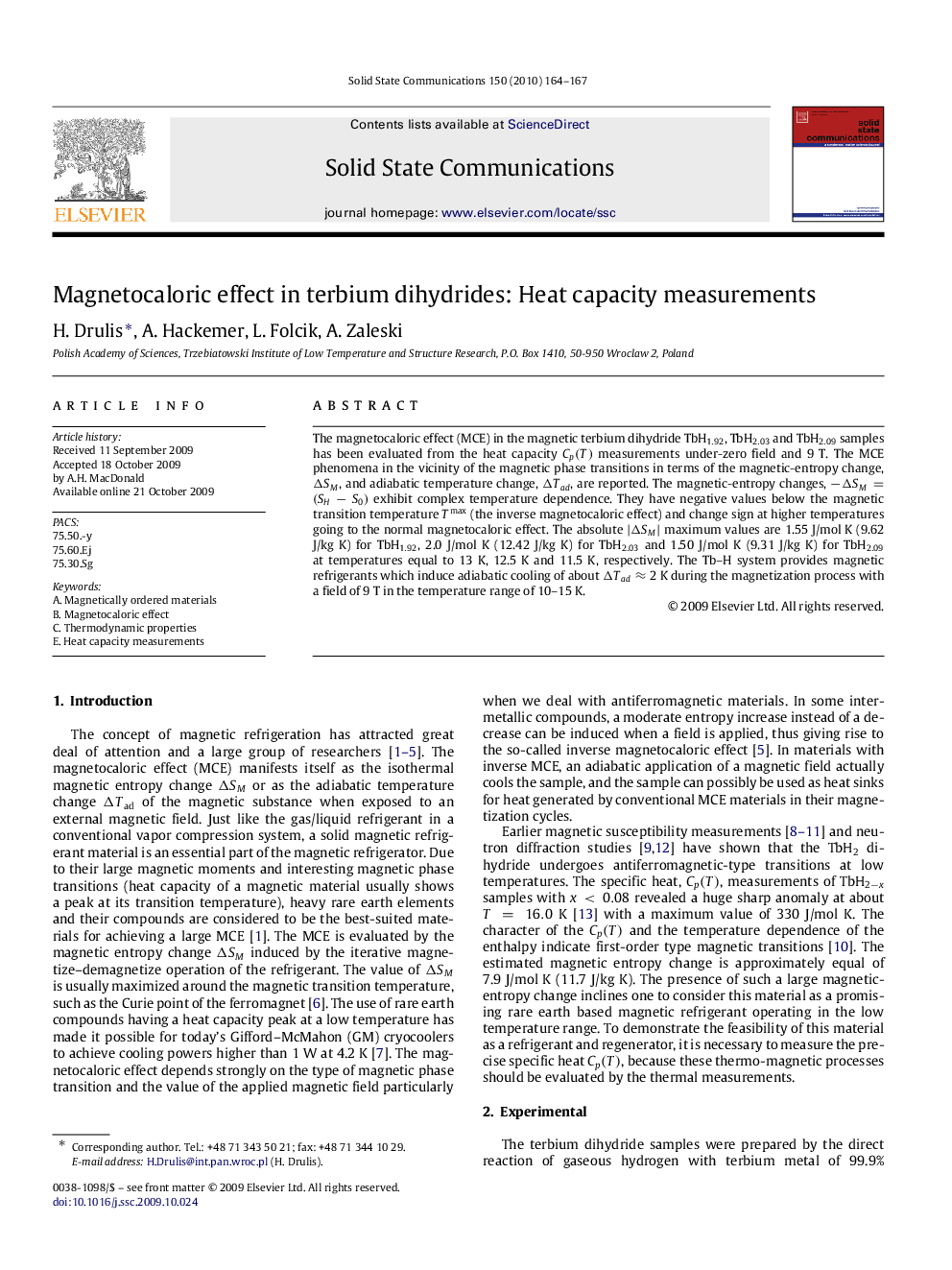| Article ID | Journal | Published Year | Pages | File Type |
|---|---|---|---|---|
| 1594363 | Solid State Communications | 2010 | 4 Pages |
The magnetocaloric effect (MCE) in the magnetic terbium dihydride TbH1.92, TbH2.03 and TbH2.09 samples has been evaluated from the heat capacity Cp(T)Cp(T) measurements under-zero field and 9 T. The MCE phenomena in the vicinity of the magnetic phase transitions in terms of the magnetic-entropy change, ΔSM, and adiabatic temperature change, ΔTad, are reported. The magnetic-entropy changes, −ΔSM=(SH−S0) exhibit complex temperature dependence. They have negative values below the magnetic transition temperature Tmax (the inverse magnetocaloric effect) and change sign at higher temperatures going to the normal magnetocaloric effect. The absolute |ΔSM| maximum values are 1.55 J/mol K (9.62 J/kg K) for TbH1.92, 2.0 J/mol K (12.42 J/kg K) for TbH2.03 and 1.50 J/mol K (9.31 J/kg K) for TbH2.09 at temperatures equal to 13 K, 12.5 K and 11.5 K, respectively. The Tb–H system provides magnetic refrigerants which induce adiabatic cooling of about ΔTad≈2K during the magnetization process with a field of 9 T in the temperature range of 10–15 K.
